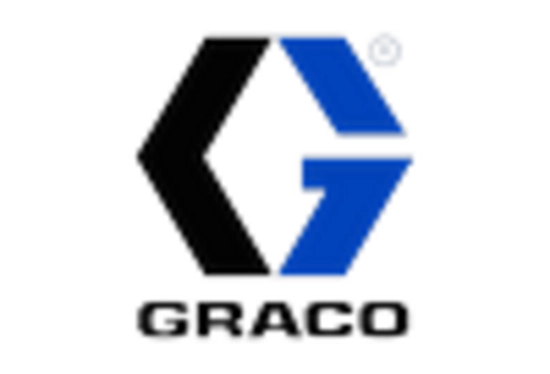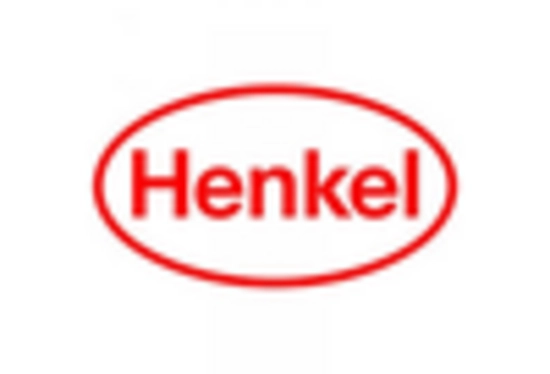Increased Focus on Food Safety
The Fluid Dispensing Equipment Market is also being propelled by an increased focus on food safety and quality assurance. As consumers become more health-conscious, food manufacturers are compelled to adopt stringent safety measures, which include precise fluid dispensing systems for ingredients and additives. In 2025, the food and beverage sector is anticipated to contribute significantly to the fluid dispensing equipment market, as companies seek to enhance production efficiency while ensuring compliance with safety regulations. The integration of advanced dispensing technologies allows for better control over ingredient proportions, thereby improving product consistency and safety. This trend suggests that the fluid dispensing equipment market will continue to thrive as food manufacturers prioritize quality and safety in their production processes.
Emergence of Smart Manufacturing
The Fluid Dispensing Equipment Market is witnessing a transformative shift with the emergence of smart manufacturing practices. As industries increasingly adopt Industry 4.0 principles, the demand for intelligent fluid dispensing solutions is on the rise. In 2025, the integration of IoT and automation technologies is expected to reshape the fluid dispensing landscape, enabling real-time monitoring and control of dispensing processes. This shift not only enhances operational efficiency but also reduces waste and improves product quality. The fluid dispensing equipment market is likely to see a surge in demand for systems that can seamlessly integrate with existing manufacturing infrastructures. As manufacturers strive for greater flexibility and responsiveness, the role of advanced fluid dispensing equipment becomes increasingly critical in achieving these objectives.
Rising Demand in Automotive Sector
The Fluid Dispensing Equipment Market is experiencing a notable surge in demand, particularly from the automotive sector. As manufacturers increasingly adopt automation and precision in assembly lines, the need for advanced fluid dispensing solutions becomes paramount. In 2025, the automotive industry is projected to account for a significant share of the fluid dispensing equipment market, driven by the growing complexity of vehicle designs and the need for efficient production processes. This trend indicates that fluid dispensing equipment is not merely a supplementary tool but a critical component in enhancing manufacturing efficiency and product quality. Furthermore, the integration of smart technologies in vehicles necessitates precise fluid application, further propelling the demand for sophisticated dispensing systems. Thus, the automotive sector's evolution appears to be a key driver for the fluid dispensing equipment market.
Expansion of Electronics Manufacturing
The Fluid Dispensing Equipment Market is significantly impacted by the expansion of electronics manufacturing. As the demand for electronic devices continues to rise, manufacturers are increasingly relying on precise fluid dispensing solutions for applications such as soldering and adhesive bonding. In 2025, the electronics sector is projected to account for a considerable share of the fluid dispensing equipment market, driven by the need for high-quality assembly processes. The complexity of modern electronic components necessitates the use of advanced dispensing technologies to ensure accuracy and reliability. This trend indicates that the fluid dispensing equipment market will likely benefit from the ongoing innovations in electronics manufacturing, which require sophisticated dispensing systems to meet the evolving demands of the industry.
Growth in Pharmaceutical Manufacturing
The Fluid Dispensing Equipment Market is significantly influenced by the expansion of pharmaceutical manufacturing. As the global population ages and healthcare demands increase, pharmaceutical companies are ramping up production capabilities. This growth necessitates the use of advanced fluid dispensing equipment to ensure accurate dosing and formulation of medications. In 2025, the pharmaceutical sector is expected to represent a substantial portion of the fluid dispensing equipment market, driven by stringent regulatory requirements for precision and consistency in drug manufacturing. The need for automation in this sector further emphasizes the importance of reliable dispensing systems. Consequently, the fluid dispensing equipment market is likely to benefit from the ongoing advancements in pharmaceutical technologies, which require innovative dispensing solutions to meet evolving industry standards.


















Leave a Comment